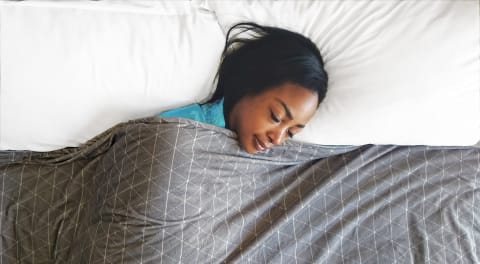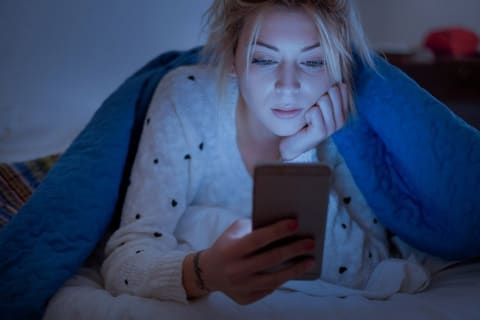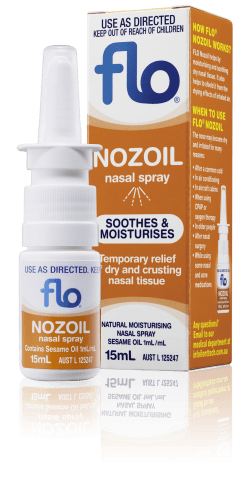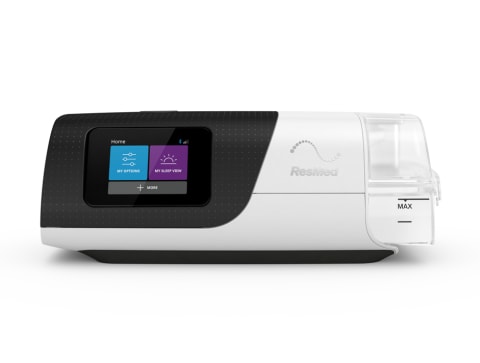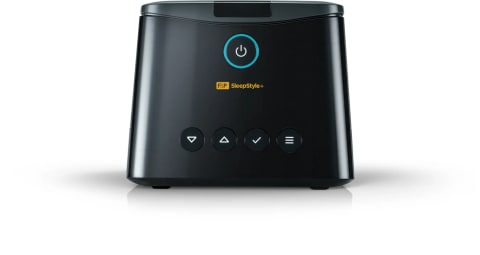CPAP BIPAP Difference
CPAP vs BiPAP: Understanding the Difference
CPAP and BiPAP are both positive airway pressure (PAP) therapies used to treat sleep apnea. The main difference is how they deliver air pressure, which affects comfort and effectiveness. In simple terms, CPAP (Continuous Positive Airway Pressure) provides one constant pressure setting for both inhaling and exhaling, while BiPAP (Bi-level Positive Airway Pressure) has two levels: a higher pressure when you breathe in and a lower pressure when you breathe out.
A CPAP machine delivers a steady stream of pressurised air to prevent airway collapse, usually set by your specialist based on a sleep study. BiPAP is similar but alternates between IPAP (inhalation pressure) and EPAP (exhalation pressure) to make breathing out easier.
Single vs. Dual Pressures: CPAP uses one fixed pressure (typically 4–20 cmH2O) no matter if you’re breathing in or out. BiPAP has two settings – higher for inhale and lower for exhale – which can be gentler for some users.
Intended Users: Most people with obstructive sleep apnea (OSA) start on CPAP. Sleep specialists generally recommend CPAP therapy for OSA and only move to BiPAP if the patient can’t tolerate CPAP. BiPAP is more often prescribed for central sleep apnea or complex cases like severe lung or heart disease.
Comfort & Cost: Some CPAP machines now offer an expiratory pressure relief feature, but BiPAP provides that relief by default. Because of the extra technology, BiPAP units are usually more complex and costly than comparable CPAP units. Travel-friendly CPAP devices do exist, while full BiPAP units tend to be home-based.
Choosing the right machine matters because it can affect how well you stick with therapy. If you have a standard case of OSA, CPAP will likely keep your airway open and improve your sleep. But if you have trouble exhaling against the constant pressure, or if your doctor diagnoses central apnea or a lung condition, a BiPAP may be needed. Your sleep specialist will decide based on your sleep study results and overall health. The goal is always to find the simplest effective therapy so you can sleep soundly and breathe easily.
 ResMed Lumis 150 VPAP ST-A 4G with Built-in Wireless Connectivity, ...
ResMed Lumis 150 VPAP ST-A 4G with Built-in Wireless Connectivity, ...
 ResMed Lumis 150 VPAP ST with Built-in Wireless Connectivity, Humid...
ResMed Lumis 150 VPAP ST with Built-in Wireless Connectivity, Humid...
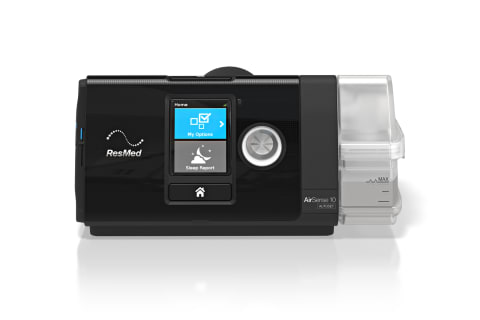 Further $50 Off with code "XMAS50"
ResMed AirSense 10 AutoSet 4G CPAP Machine
Further $50 Off with code "XMAS50"
ResMed AirSense 10 AutoSet 4G CPAP Machine
 Philips Respironics DreamStation Auto CPAP Machine with Humidifier
Philips Respironics DreamStation Auto CPAP Machine with Humidifier
Our Consultants Can Help You Compare Options and Provide Independent Advice
Starting PAP therapy can feel confusing at first, and we’re here to make it easier. Our trained CPAP consultants will walk you through everything – from understanding your prescription to hands-on setup. They’re independent of any one brand, which means they’ll help you compare devices and masks without bias.
You can trust our staff to listen to your concerns (for example, whether you have trouble with claustrophobia, facial pressure, or nasal congestion) and then recommend a machine or mask that suits you best. We’ll also give you all the education and encouragement you need right from the start. Proper education and troubleshooting during the first month of use greatly boost your chance of sticking with therapy.
Our CPAP consultants provide thorough training on how to use and clean the equipment, help you fit the mask correctly, and ensure humidification and pressure settings feel comfortable. You can meet with us in person at our clinic, or we can connect via telehealth – whichever you prefer.
If anything isn’t working (a mask leak, dryness, or pressure issue), we troubleshoot it quickly so you stay on track. In short, we act as your personal guide through every step – from mask fitting to fine-tuning your therapy – ensuring you feel supported and confident as you start CPAP or BiPAP treatment.
Leading CPAP and BiPAP Brands at the Best Prices
Rest assured, Sove stocks all the top-rated devices so you can choose the best therapy for you. Our range includes the latest from ResMed (such as the AirSense 11 AutoSet CPAP and AirCurve 10 VAuto BiPAP series), Philips Respironics (DreamStation CPAP and BiPAP machines), and Fisher & Paykel (the SleepStyle+ CPAP machine). All of these trusted brands have excellent track records for reliability and patient comfort.
Despite offering premium products, we keep our prices competitive. Our website advertises a “Lowest Price Guarantee,” and we often run specials and bundle deals. We also price match major competitors and provide free shipping on larger orders.
In short, you’ll get the latest PAP technology without paying top dollar. Plus, we have starter bundles and beginner-friendly options if you’re just getting started, as well as advanced machines for those who need them.
Flexible Rental and Payment Plans
We understand that the cost of a new device can be a concern. That’s why we offer flexible payment plans and rental options to fit your budget and timeline. For example, many patients qualify for our CPAP Payment Plans where you pay only $1 upfront, get interest-free payments spread over three years, and even have the option to pay off the balance early without penalty.
If you just need a machine for a short time – say, while waiting for a sleep study, insurance approval, or recovery from surgery – we also offer short-term rentals. Our rental program provides a fully serviced device delivered to your door, so you can start treatment immediately without a big upfront cost.
Ongoing Support Helps You Stay Consistent with Treatment
Finally, our care doesn’t stop once you’ve picked up your machine. We provide ongoing support to help you stay consistent with therapy – because regular use is what delivers the health benefits.
We schedule follow-up calls and check-ins (in-person or by telehealth) after you start treatment, particularly in the first few weeks. We use these follow-ups to ask how you’re feeling, review your usage and mask seal, and make any needed adjustments to pressure or comfort settings.
Additionally, most modern PAP machines can upload therapy data online. With your permission, we can access that data to track your nightly usage and apnea indices. If patterns show you’re dropping therapy, or if events are still happening, we’ll reach out proactively.
Above all, we believe in a team approach to your therapy. You can always call or email us with questions – about mask cleaning, travel tips, adding a humidifier, or anything else. Our CPAP consultants and sleep specialists will continue to collaborate with your doctor. With our support, you’ll have the guidance you need to make CPAP/BiPAP a comfortable, life-changing habit.
ALWAYS FOLLOW THE DIRECTIONS FOR USE. CPAP is used for Obstructive Sleep Apnoea treatment. When considering whether a sleep study or CPAP is right for you, speak to your doctor. Medicare criteria and T&Cs apply. Payment plans available for approved applicants only; fees, terms, conditions, minimum amounts and exclusions apply.
Frequently Asked Questions
Can sleep apnea be cured?
Sleep apnea is generally considered a chronic condition, so there’s no one-time “cure.” However, it can be greatly improved. Treating underlying causes can dramatically reduce symptoms – for example, weight loss or surgery can eliminate obstructive apnea in some cases – but most people still need ongoing therapy. CPAP or BiPAP doesn’t cure sleep apnea, but it effectively treats it.
Can I use a CPAP machine if I don’t have sleep apnea?
CPAP therapy is intended for people with diagnosed sleep-disordered breathing. Doctors generally only prescribe CPAP for those with obstructive sleep apnoea. If you don’t have apnoea, using CPAP is not recommended. Unnecessarily forcing pressurised air into a normal airway could cause side effects like nasal drying, bloating, or even disturb your breathing rhythm.
Why use CPAP instead of just oxygen?
CPAP and oxygen therapy serve very different purposes. CPAP delivers pressurised air to keep your airway open during sleep, whereas supplemental oxygen simply increases the oxygen percentage of the air you breathe. In sleep apnea, the problem is airway collapse, not low oxygen content. Oxygen alone does not keep the airway from blocking. In contrast, CPAP targets the root issue – it keeps the airway open and automatically helps maintain normal oxygen levels.
Does a BiPAP machine give you oxygen?
No – by itself, a BiPAP machine does not add oxygen to the air. CPAP and BiPAP units draw in room air (about 21% oxygen) and deliver it under pressure. BiPAP simply alternates the pressure levels but still uses regular air. If you ever need extra oxygen – for example, in advanced lung disease – an oxygen concentrator or tank can be hooked up to a PAP device, but that’s a separate setup.
Why would someone need a BiPAP instead of a CPAP machine?
A physician may prescribe BiPAP for several reasons. One common scenario is central sleep apnea, where the brain doesn’t always signal the breathing muscles. BiPAP is also used if a patient can’t tolerate a high fixed pressure on a CPAP. The lower exhalation pressure on BiPAP makes breathing out against the machine easier. BiPAP may also be chosen for certain lung or neuromuscular conditions that require extra ventilatory support during sleep.
If you still have questions or would like personalised help choosing between CPAP and BiPAP, don’t hesitate to reach out to our clinical team. Whether in person or via telehealth, we’re here to make your journey toward better sleep as smooth and successful as possible.




